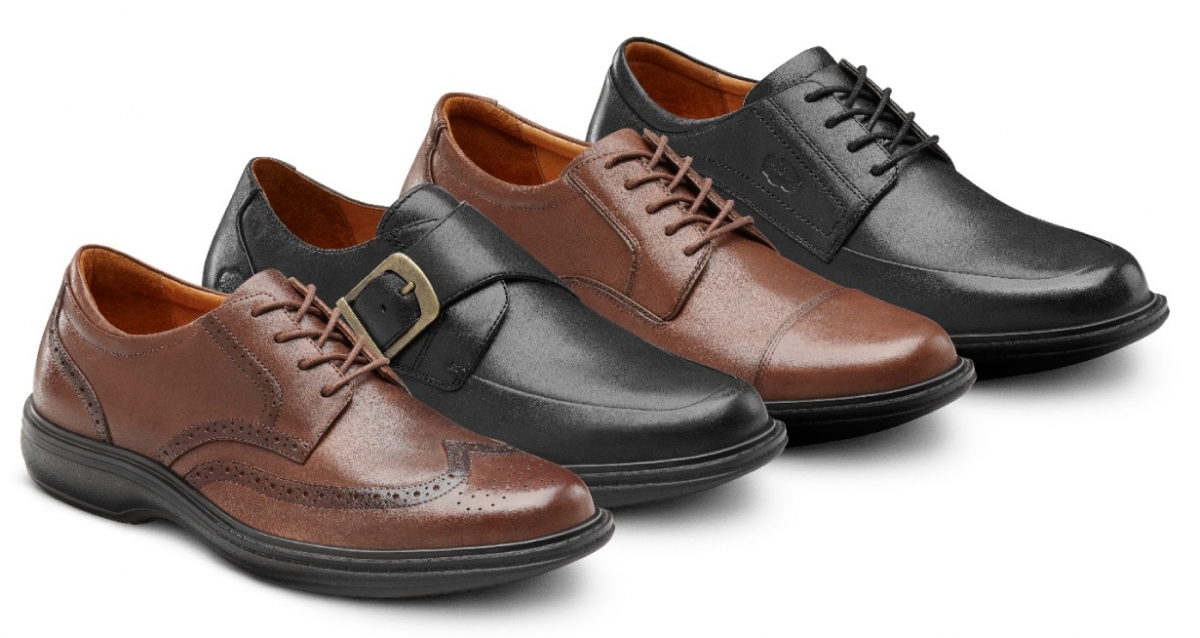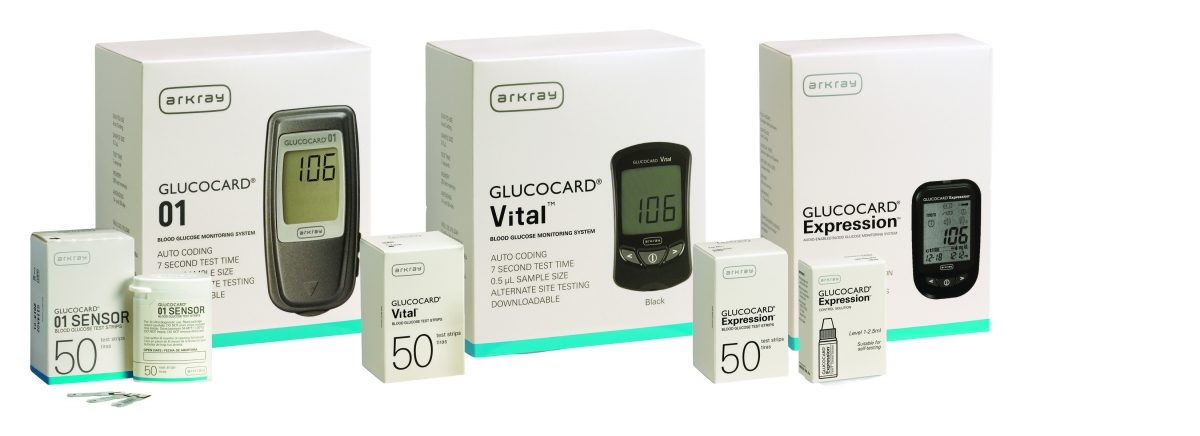For the increasing number of Americans with diabetes, the selection of diabetic products is vast, with roughly 200 glucose meters made by 50 manufacturers.
Although it is a crowded market, it is also largely dominated by huge multinational pharmaceutical companies such as Johnson & Johnson.
Jon Johnson, director of compliance for New York-based manufacturer U.S. Diagnostics, estimated that Johnson & Johnson holds about 30 percent of the market. It is a tall order, but some small to mid-sized manufacturers are able to compete with more attractive pricing.
“The larger companies’ wholesale cost is easily double ours,” Johnson said. “We manufacture products that are every bit as good as the big guys at a fraction of the cost. That is the focus of our marketing efforts.”
Last year’s sales at U.S. Diagnostics were essentially similar to 2010, with the company seeking to cut costs and per-unit profitability remaining flat.
“The other elephant in the room is competitive bidding through Medicare,” Johnson said. “Providers are exceedingly anxious that competitive bidding will go through.”
Round 1 of the Competitive Bidding Program included mail-order diabetic supplies in nine cities, a move that advocates said is driving patients away from mail order and into retail pharmacies, where they can continue to use products they know and trust.
“I suspect that if CMS officials took a serious look at the numbers in those pilot cities, they would find that Medicare did not save a dime,” Johnson said. “They saved money on mail order, but they spent more on the retail.”
According to Johnson, providers dispensing from a brick and mortar store—either a pharmacy or an HME location—are still getting about $38 in reimbursement for a box of 50 test strips.
The number of providers conducting mail-order business will shrink as competitive bidding spreads, but an avenue for sales will remain, as demonstrated by many patients in Round 1 areas. Former mail-order customers switched to retail pharmacies, and reimbursements were not cut for those businesses, Johnson said.
Despite lower prices for mail-order supplies, Robert Wernsman, vice president of the consumer healthcare division at ARKRAY USA, cautioned that diabetes products should not be taken lightly by patients or providers.
“Even though there are a lot of good products in the marketplace, and prices have dropped to levels where in peoples’ minds blood glucose meters have become a commodity, the reality is we are still dealing with a medical device and a lifelong, serious disease,” he says. “HME companies need to partner with a manufacturer that they know has a strong history in this market, and will be there to back them up if questions or concerns come from referral sources, customers or the FDA.”
Multiple Channels
Maureen Ursprung, director of national accounts for AgaMatrix Inc. of Salem, N.H., said her company’s numbers were positive in 2011 thanks to creativity and strong sales to diverse channels.
“We’re manufacturing blood glucose products for Sanofi, and we have a partnership with Apple where we have an app that is available in the iTunes Store for people to help them manage their diabetes,” Ursprung said. “In addition to working with the competitive bidding channels such as mail order and companies that are only billing Medicare, we do a lot with contracted business, group purchasing organizations, retail and partnerships that we have developed.”
The diversified approach can serve providers equally well, particularly for those dreading competitive bidding—if it is enacted as currently constructed.
“A lot of providers right now are so focused on winning competitive bidding contracts, but if they don’t win, there is still opportunity,” Ursprung said. “They could still provide supplies on the retail front as a cash product. If a Medicare patient walks into a store and purchases diabetes products, the products still get covered by Medicare, but they are not subject to competitive bidding.”
Investing in education may seem like an unattractive option in tough times, but Ursprung believes it can be worthwhile in some cases.
“In today’s market, I see a lot of buzz right now with companies hiring or outsourcing sales companies to come in and train their sales teams,” Ursprung said. “These providers are succeeding. They have used training companies such as Emerge Sales, a company out of New York. They help you reorganize and train your staff on how to be successful, whether it’s to sell, educate beneficiaries or help with billing.”
Bryan Sowards, CEO of Infopia USA, agreed that providers will continue to crave knowledge and that might make a trip to Medtrade Spring or the fall show an attractive option.
“When the industry is evolving, it is not the time to be left behind,” Sowards said. “Insanity is doing the same thing and expecting a different outcome. Medtrade facilitates learning, networking and crucial preparation for the future.”
The savvy approach is all but a necessity in today’s market, with baby boomers increasingly wanting high quality and low prices. That goes for manufacturers and providers.
“There are a lot of major brands out there that we compete against,” Ursprung added. “We’re still successful because we manufacture a high quality product at a value price, and we put together strategic partnerships that allow us to be successful.”
Ursprung maintained that many providers believe patients are married to their brands and will likely refuse to switch. The reality is that allegiances can change based on education and new technology. It is good news for providers looking to switch business models with the help of new manufacturing partners.
Fewer Providers in the Future
Market demand may be high and getting higher, but Bret Morey, director of marketing and sales at ForaCare in Charlotte, N.C., fears that competitive bidding will increasingly weaken the resolve of otherwise solid providers.
“We are already seeing some of this in 2012,” Morey said. “Businesses are already saying they won’t be in business in two years, and they are not doing much to change anything.”
Meanwhile, one in three Americans are considered pre-diabetic above and beyond the roughly 26 million diagnosed diabetics. Despite the undeniable demand, competitive bidding undermines the market stability and predictability that businesses crave.
At this point, many small- to mid-size companies do not know if they will win a competitive bidding contract, and they acknowledge that a win is far from a ticket to success. In this climate, the acquisition market is sure to climb among the large nationals.
“They are buying the smaller companies who have been around a long time,” Morey said. “These large companies are willing to deal with competitive bidding and lower reimbursement as it relates to mail-order diabetes supplies.”
Whether the market is mail order or retail, Morey believes providers and patients will respond to quality and innovation.
“All of our products have ejector buttons so you can eject a strip without having to touch it,” he said. “We had some of the first voice technology with an audible meter in multiple languages. We have three different software systems available, and our PC link is free.
Anyone who owns our product can go on our site and download it for free. This is crucial, because those who are able to manage patients better and have a system that enables, are going to be the big winners in the market.”
Diabetic Shoes: Take It from the Bottom
 Dr. Comfort diabetic shoes offer style and comfortDiabetic footwear can be a key offering for the full-spectrum diabetic products provider, but it requires the right approach and a good understanding of market dynamics.
Dr. Comfort diabetic shoes offer style and comfortDiabetic footwear can be a key offering for the full-spectrum diabetic products provider, but it requires the right approach and a good understanding of market dynamics.
Eric Lorenz is senior vice president and general manager for Dr. Comfort and DJO Global, and he recently responded to questions about the market.
How was 2011 from a sales perspective?
It was challenging. While Dr. Comfort continued to grow in 2011, we fell short of our expectations.Eric Lorenz Senior VP and GM, Dr. Comfort and DJO Global
Why was 2011 so challenging?
Increased Medicare requirements and audits challenged our providers more than we have ever seen in the past. Throughout the year, we worked on educating our providers and developing tools to help make being compliant easier—such as our Check 7 documentation system (which providers can find at www.drcomfort.com/Check7.doc).
Going into 2012, while we will continue to look for more ways to make the Medicare process easier, we feel our providers are much better prepared to meet these challenges. They have accepted that our industry is under increased scrutiny, and most have put better systems in place to maintain their ability to provide our products to patients.
Did competitive bidding cause problems?
Competitive bidding also put pressure on some of our HME/DME accounts in 2011, and we have, unfortunately, seen some of them fall by the wayside. While diabetic footwear is not a part of competitive bidding (due to the relatively low cost), some of our providers who relied heavily on providing medical equipment (that was a part of competitive bidding) struggled to maintain profitability because those revenue opportunities were lost.
Why are diabetic products still a good business opportunity?
To say diabetic products and footwear are “good” opportunities is an understatement—a big one. The numbers are absolutely staggering. Diabetes affects more than 25 million people in the U.S. alone. That is more than 8 percent of the population. Of those diabetics who have a medical need for diabetic footwear, less than 20 percent currently receive them. Raising awareness—of both consumers and health care professionals—is our biggest challenge.
Why is diabetic footwear needed?
Diabetic footwear helps prevent serious foot health complications that can arise as a result of diabetes, such as ulcerations and amputations. On average, the rate of amputation for people with diabetes is 10 times higher than for people without diabetes.
The costs associated with treating a foot ulcer can be as high as $20,000, with an amputation as high as $70,000. Both have high recidivism rates. Comparing this to the cost to Medicare of providing diabetic shoes and inserts (typically less than $300), it is easy to see why Medicare reimburses for them.
Have the data backed up these claims?
We have recently seen some encouraging news. The CDC reported in January 2012 that amputation rates for diabetics have fallen by more than half since the mid 1990s. This is right around the time Medicare began paying for blood sugar monitoring and diabetic footwear. We are confident—especially in light of trends like this—that Medicare and the CDC will continue to encourage and support diabetic footwear as part of a comprehensive foot care program to help prevent diabetic amputations.
What challenges do HME providers who sell diabetic shoes face?
Aside from the Medicare and competitive bidding challenges discussed above, I think the biggest challenge is continually looking for new ways to market their products and services, as well as diversify their offerings to fill as many needs as possible with each patient they see. The numbers are clearly there for increased business in diabetic footwear, as well as most other medical equipment.
Capturing their audience, raising awareness, maximizing every opportunity and increasing efficiencies every step of the way are the primary keys to survival—and success. At Dr. Comfort, we work hard to provide the information and tools our providers need to do those things. But it’s the creativity and ingenuity in how some of our providers use what we provide that determines how successful they are.
HomeCare, March 2012

